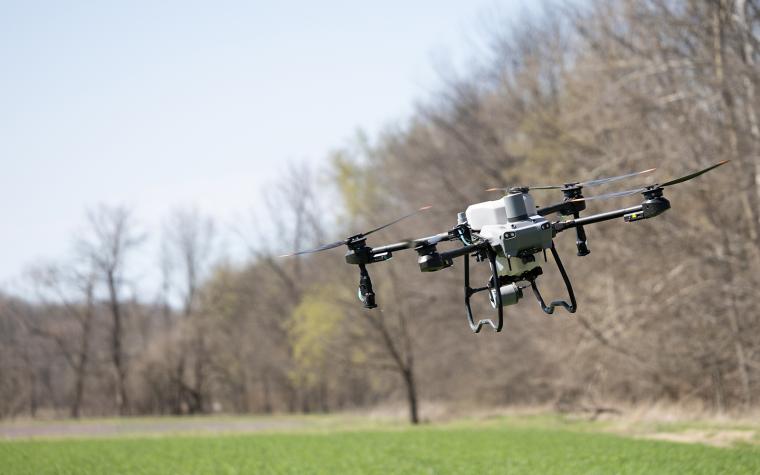MOUNT VERNON, Mo. – Stored hay can be a livestock producer’s best insurance, says University of Missouri Extension plant science specialist Caleb O’Neal, who is also a cattle producer. It provides flexibility for cattlemen to rest pastures in the event of drought and is often the feed of choice for winter herd maintenance.
O’Neal’s goals for his own herd include being able to actively graze high-quality forage most of the year, but he relies on hay as a backup option “when grazing pickings are slim.”
High-quality hay can be made with favorable weather and good management. “But in many cases, the hay that we as producers make is cut too late in the season and has poor feed value,” he says.
For a longer grazing season, many producers either manage their established forages differently or plant specific forage species that grow during times of the year that traditionally have limited forage availability. Many of these species are popular in cover crop seed mixtures. Cover crops can provide an excellent opportunity for livestock producers to extend their grazing season, O’Neal says.
“Planting cover crops between cash crops like corn and soybeans is a widely adopted practice across the state, and while these annual cover crop species are frequently planted for the benefit they provide to the soil, their planting also opens the door to outstanding opportunities for graziers who are willing to think outside the box,” he says.
Many cover crops that are planted to maintain soil structure during the off-season can also provide unparalleled forage quality for livestock producers at a time of year that aligns very well with the forage base relied upon by most cattle producers in the state, he says.
Many producers are familiar with the excellent forage that cereals like wheat and rye can provide in early spring. But, historically, it’s difficult to achieve a grazeable cover crop in the fall on the same ground you’re using for cash crops because the cash crop grows late into the season. By the time it is harvested, there is little time to get a cover crop established and growing strong enough to tolerate fall grazing.
However, modern technology like utility drones can help producers “double dip” by establishing cover crops earlier in the season and achieve both fall and spring grazing from the same piece of ground, says O’Neal.
Aerially seeded cover crops can be seeded earlier in the season–late August through September–while the cash crop of corn or beans is still standing in late maturity. Cover crop seeds flown over the cash crop canopy will work down to the soil and slowly emerge in the protected space provided by the standing crop of corn or beans.
“The magic happens when the cash crop is harvested and the dense canopy is removed, allowing sunlight to be captured by the already established young cover crop below,” says O’Neal. The cover crop that has been seeded and growing for several weeks wastes no time in being productive. With adequate fall moisture, it will likely be ready to graze in late October through November.
Grazing cover crops in the fall lets livestock producers rest cool-season pastures to accumulate winter stockpile fescue, which holds forage quality well and can then be grazed in the dead of winter.
Common cover crop mixes for aerial seeding include small-seeded brassicas like turnips and radishes, but there are also few plants that can put on as much growth for fall grazing as a spring oat, O’Neal says. Forage species like this when paired together make for exceptional fall and early-winter grazing.
For fall and spring grazing from the cover crop mix, be sure to select the correct forage species to aerially seed. Most species of oats will winter-kill, so throwing a winter-hardy cereal like rye or triticale and a legume like crimson clover in the mix can help ensure there is high-quality forage available to graze in March and April the following year.
“Aerially seeding cover crops can be an excellent way to extend the grazing season and make the most of every acre. With land prices climbing faster than a cornstalk in June, maximizing the productivity of the ground we already have just makes sense, says O’Neal.
“If we plan ahead, we can establish high-quality forage that not only supports the nutritional needs of our herds but also reduces our reliance on costly stored feed. When implemented correctly, grazing cover crops in the spring and fall is a win for the livestock, the land and our bottom line,” he says. “With the right forage species and adequate moisture, aerial seeding can help producers reduce feed costs, improve herd health and get more value from every acre.”
